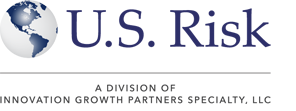Insights
 The Evolving Workers’ Compensation Landscape
The Evolving Workers’ Compensation Landscape
May 15, 2025
The workers’ compensation landscape is evolving—and for employers and professional organizations, the stakes are higher than ever. As economic conditions, workforce demographics, and regulatory environments shift, staying ahead of emerging risks is essential could not just to reduce costs, but to protect employee well-being and ensure compliance.
Based on insights from leaders in the field of workers’ compensation programs, here are five of the most critical challenges facing workers’ comp in 2025—and strategic solutions for business owners. To learn more about programs tailored for business interests, visit our workers’ compensation page.
According to the Institute of WorkComp Professionals, the five major risks for the industry in 2025 are:
1. Uncertain Market Conditions
While the national workers’ comp market remains relatively stable, subtle but important pressures are mounting:
- Medical inflation and rising wages are driving up claim costs.
- Weaker reserve strength among insurers could affect claim handling.
- State-specific legislation—such as Florida’s physician reimbursement law—can quickly alter premium rates and coverage terms.
What to do: Employers should work closely with their insurance brokers to regularly review rates and audit their experience modification factors. Risk management is no longer a set-it-and-forget-it strategy—it requires continuous oversight and adaptability.
2. A Rapidly Changing Workforce
Two major demographic shifts are reshaping the American workplace:
- Older employees are staying longer—especially those aged 65 and up—bringing valuable experience but also longer recovery times if injured.
- Generation Z is entering in force, bringing digital fluency but less physical work experience and higher rates of reported mental health concerns.
What to do: Businesses should implement more robust safety and onboarding programs, especially for new or inexperienced workers. For older employees, consider adjustments like ergonomic assessments or flexible scheduling to reduce injury risk.
3. Mental Health Claims Are Rising
Mental health is no longer a fringe topic in workers’ comp:
- New laws in states like New York and Connecticut now allow workers to file claims for conditions like PTSD—even without a physical injury.
- Mental health claims are on average 5 times more expensive than traditional physical claims.
What to do: Support a workplace culture that promotes well-being. Partner with your insurance provider to evaluate coverage for mental health-related claims and invest in employee assistance programs (EAPs) and mental health training for managers.
4. Navigating Marijuana Legalization
With medical marijuana now legal in 39 states and recreational use allowed in 24, business owners face growing confusion about workplace drug policies:
- Some states now prohibit discrimination based on off-duty marijuana use.
- There is no standardized test for real-time impairment, making safety-sensitive roles especially vulnerable.
What to do: Update your drug testing and workplace safety policies. Focus less on punitive measures and more on ensuring that workers are fit for duty. Legal counsel and HR consultants can help tailor policies that meet your local and industry-specific needs.
5. Climate Change and Heat-Related Risks
Extreme weather is creating new occupational hazards, particularly in outdoor industries like construction, agriculture, and logistics:
- Several states now require employers to implement heat illness prevention programs. This type of requirement is becoming more common as climate change concerns shape our understanding of employee risks due to heat.
- Research shows that workplace injuries increase dramatically on hot days, with risks ranging from dehydration to reduced mental focus.
What to do: Conduct a job hazard analysis for heat exposure. Provide shade, hydration stations, and mandatory breaks in hot conditions. Document all preventive actions to demonstrate compliance if a claim arises.
Protecting Against Risks: The Benefits of Working with Experienced Providers
Navigating the evolving landscape of workers’ compensation in 2025 requires strategic, informed action. Partnering with an experienced workers’ compensation insurance underwriter offers more than just access to coverage—it provides a valuable resource for managing risk and protecting your business. Here are several key benefits of working with a seasoned insurance professional:
- Regulatory expertise: Stay compliant with changing state laws and industry-specific mandates, including new rules around mental health and marijuana use.
- Tailored coverage solutions: Ensure your policy reflects the unique exposures of your business, workforce, and operational structure.
- Claims management support: Gain guidance on best practices for reporting, investigating, and mitigating claims to minimize long-term impact.
- Risk identification and mitigation: Uncover hidden vulnerabilities and receive recommendations to improve workplace safety and reduce injury rates.
- Cost control strategies: Leverage expert insight to reduce experience modification rates, lower premiums, and avoid unnecessary expenses.
- Ongoing partnership: Receive continuous advice and policy adjustments as your business evolves and new risks emerge.
By collaborating with a knowledgeable and experienced underwriter, business owners and professional organizations can confidently manage today’s complex workers’ compensation environment while building a safer, more resilient workforce. ◼

